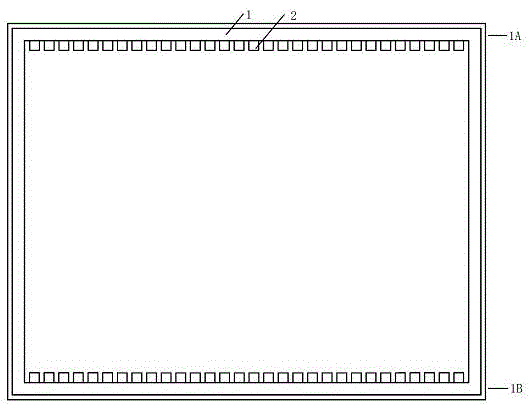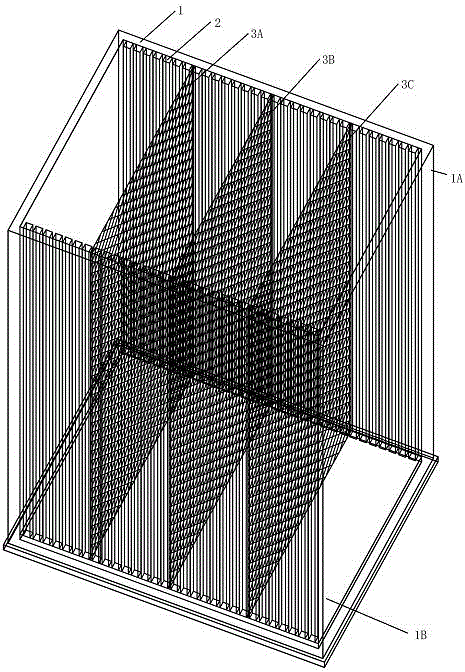Space-adjustable aquatic plant co-culture device
A technology of aquatic plants and co-cultivation, applied in the research field of chemical competition among aquatic plants, can solve problems such as connectivity or punching holes in clapboards, interfering with experimental results, and unsatisfactory results, so as to facilitate repeated use, reduce costs, and easily cleaning effect
- Summary
- Abstract
- Description
- Claims
- Application Information
AI Technical Summary
Problems solved by technology
Method used
Image
Examples
Embodiment 1
[0020] The present invention will be described in detail below in conjunction with the accompanying drawings.
[0021] according to figure 1 , figure 2 It can be seen that a spatially adjustable aquatic plant co-cultivation device includes a first stainless steel grid 3A, a second stainless steel grid 3B, a third stainless steel grid 3C, a co-cultivation glass tank 1 and a glass strip 2. It is characterized in that: the glass strip 2 is fixed on the first long side 1A and the second long side 1B of the rectangular co-cultivation glass tank 1 with glass glue (neutral glass glue with good waterproof and airtightness, available in the market), and the second long side 1B of the rectangular co-culture glass tank 1. A stainless steel grid 3A, a second stainless steel grid 3B, and a third stainless steel grid 3C are randomly or equidistantly inserted into the groove formed by the glass bar 2, and the first stainless steel grid 3A and the second stainless steel grid are used for ex...
PUM
 Login to View More
Login to View More Abstract
Description
Claims
Application Information
 Login to View More
Login to View More - R&D
- Intellectual Property
- Life Sciences
- Materials
- Tech Scout
- Unparalleled Data Quality
- Higher Quality Content
- 60% Fewer Hallucinations
Browse by: Latest US Patents, China's latest patents, Technical Efficacy Thesaurus, Application Domain, Technology Topic, Popular Technical Reports.
© 2025 PatSnap. All rights reserved.Legal|Privacy policy|Modern Slavery Act Transparency Statement|Sitemap|About US| Contact US: help@patsnap.com


